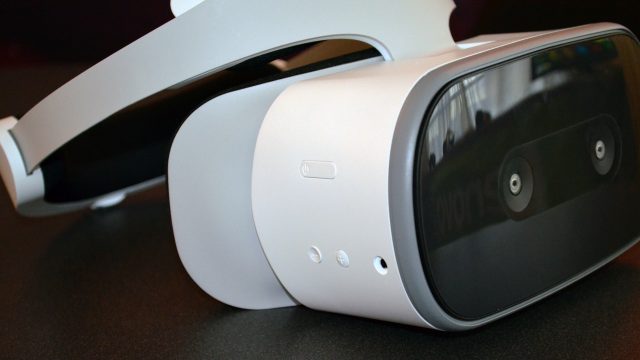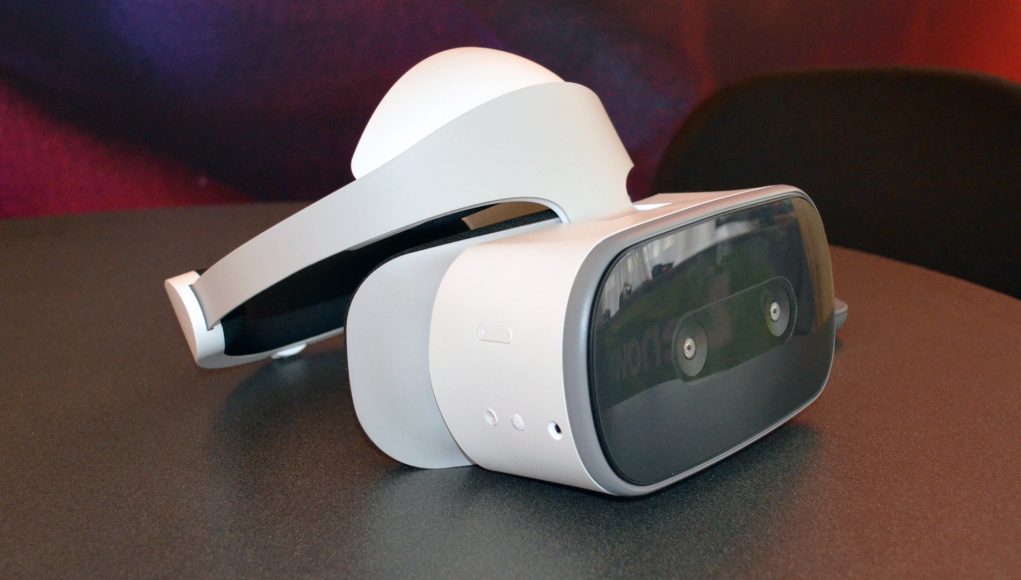Questionable Pricing

In my time with the Lenovo Mirage Solo so far, I’ve been quite impressed. Despite its weight, the headset takes several important strides toward bringing features formerly only found on high-end VR headsets down to the realm of mobile VR: notably, positional tracking and a wide field of view. However, the rotational-only controller and mobile graphical quality mean this doesn’t really feel like a ‘full’ high-end VR experience. That isn’t a problem in and of itself, but the price needs to reflect that.
Mobile VR is fundamentally oriented toward more casual users, but casual users don’t usually drop $400 on dedicated gaming equipment. Many people willing to drop that much money on a single-use gaming/entertainment device are arguably quite likely to already own a game console or modern gaming computer. If the former, there’s a good chance that they own a PS4 (given that it has a strong lead over the Xbox One and Nintendo Switch), which means they could pick up a PSVR on sale for the same $400 price point. If the latter, they could pick up a Rift for $400 (or even cheaper on sale). Both headsets are likely to provide a more immersive VR experience thanks to greater graphical capabilities and full 6DOF tracking on both head and hands.
This is mere anecdote, but of my personal friends and family, I can’t think of a single person to whom—if they came to me asking for my recommendation on a VR headset—I would recommend a $400 standalone. If they’re a gamer, the high-end tethered headsets are a solid choice. If they’re casual, I’m not going to suggest they spend $400 for a casual experience—I’d far sooner point them toward a Gear VR or Daydream headset for $100, and if they don’t happen to have a compatible phone, I’d tell them to wait until their next upgrade to get one that would work with either of those headsets.
Not to mention, we don’t know how long it will take until developers are actually designing for a half 6DOF / half 3DOF system like the Mirage Solo. When there are millions of 3DOF-only headsets out there, between Gear VR and Daydream, it hardly makes sense right now for developers to spend time figuring out how their game can take advantage of a 6DOF headset with a 3DOF controller (an odd combination not yet seen in the VR market). It would likely require ground-up redesign in order to take true advantage of the additional capability beyond simply letting players move around a little more. Unless such headsets are pouring into the market in droves, developers may just continue to focus their time on 3DOF VR experiences as a lowest common denominator, making playing VR games on the Mirage Solo like watching a DVD on a Blu-ray player.
This much can be seen in the Daydream menu on the Mirage Solo, which appears to be utterly identical to what’s seen through its 3DOF brethren—there’s no changes made to take advantage of the headset’s new capabilities as a 6DOF device.
The Big But
But, price is the key factor here. There are many advantages to standalone headsets. And while a $400 price point may put the headset into the awkward territory of being designed for casual users but priced for hardcore ones, if that price were to come down to $200, then it would be a completely different ballgame.
This is hopefully the direction that standalone VR is headed: full 6DOF at $200 or less. For the time being, it’s clear that if we want to achieve a $200 price point today, standalone VR is going to look like Oculus Go (3DOF only), while full 6DOF is going to cost more, with half 6DOF / half 3DOF falling somewhere in between as a compromise.
With the high-end headsets dropping drastically in price since the time the standalone Daydream headsets were announced last year, it seems that Lenovo now understands their $400 conundrum. In what appears to be some last-minute re-strategizing, the company sent out a note just ahead of the Mirage Solo’s reveal last week saying, “We’re working on driving down the price so that it’s accessible to more people, and we believe we can reach a more mainstream price point than the [$400] we shared.” Availability of the headset is planned for Q2, and we’ll be hearing more about pricing closer to that time.
So while $400 is the Mirage Solo’s ceiling right now, it isn’t clear how much lower Lenovo will be able to reasonably price the headset at launch. Hopefully though, in due time, the Mirage Solo, and standalone headsets with similar capabilities, will find their way down to $200 or less. That’s when they will start to become properly enticing for the casual segment.







